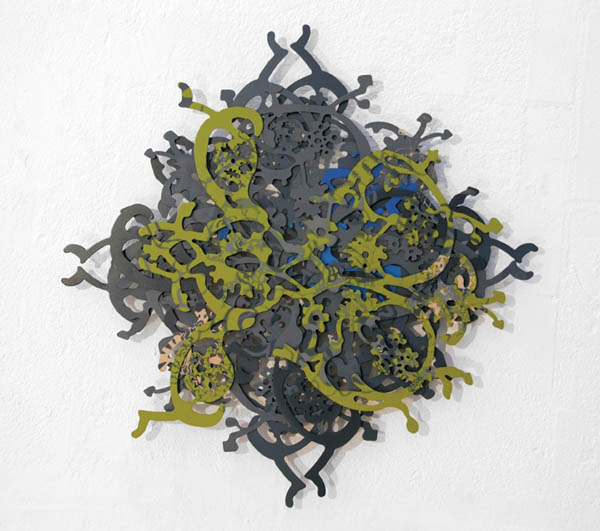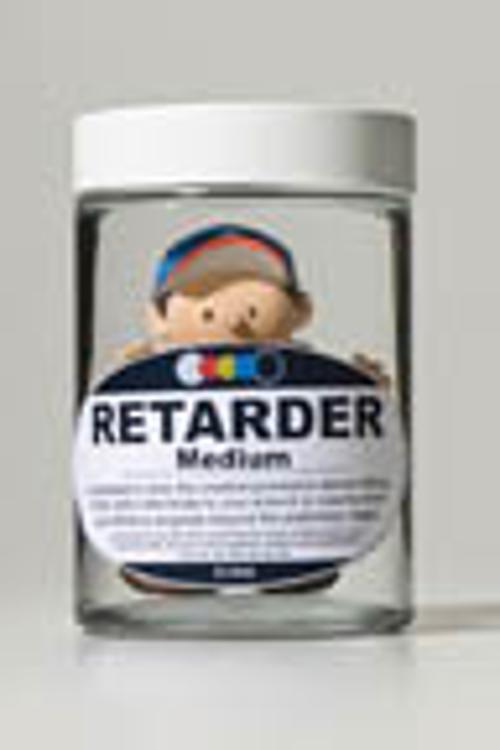
Recently, while flicking through some images of Wim Delvoye's series of lattice earthmoving vehicles, I began pondering the intersection or should I say interlace of functionality and ornamentation. The tension that exists in the chasm between the solidity and performance of robust design and the fragility and aesthetic of the decorative seems to be a driving core of contemporary art. In Delvoye's work the functionality of the objects is interrupted by their ornamentation, or is it the ornamentation that is interrupted by their attempted functionality? Or indeed is ornamentation functional in itself?
Similarly if Jorge Pardo is the go to man of contemporary art design then the reason for this must exist in his ability to make an object and/or structure second guess its own existence. Do we recognise things first for their material functionality or for their ability to camouflage their inherent capabilities? Heidegger suggested that we construct our world primarily through handling objects but I wonder if this is true, I wonder if perhaps ornamentation pre-orchestrates knowledge before objects comes to us 'at-hand'.
To create a world which derives its ethical desire to act from its aesthetic surroundings seems central to the work of Western Australian artist Pam Gaunt. Conceptual questions tumble out of her work as the semiotic nature of design and its relationship to pattern are put through the hand-wringer. Extracting the very essences of motif, Gaunt's large scale floating and hanging sculptures create a veritable hanging garden of Babylon within the gallery space.
Her solo show Errant Abstractions includes a plethora of large layered cut-out pieces hanging down from the roof. Suspended like potted handiwork, they look gentle and buoyant but are actually industrially routed cuts of MDF, covered in automotive paint and hanging off solid wiring. In Gaunt's work it seems the perception of fragility is more important then the actuality of it. Do we immediately manifest the decorative as fragile?
Borrowing freely from the aesthetics of Middle Eastern, Asian and Eastern European designs, Gaunt's motif collectives are an amalgamation of decorative forms that reside somewhere in our collective consciousness. As an accumulation, the symbols draw out a global tale of pattern appreciation, somehow manifesting their significance to our visual history. But as the motifs mesh, expand and contract, Gaunt leaves the viewer floating in between actualising her work's forms in their mind and simply allowing the artifice to wash over them. All the time the work is creating new anthologies of meaning which may or may not come to rest.
The sensuality between hard material, definitive edges and the ethereal forms of the work shortfuses our normal appreciation of functionality whilst, almost on the run, seriously questioning our collective cultural desires as they pertain to domestic design and contemporary cubical living. How will we be remembered, as functional urban dwellers or as a culture with a 'flippant' desire to decorate? (Are they the same thing?) Indeed what serious role does ornamentation play in politically actualising our spaces? Plenty, I would suggest.
Several larger forms climb up the walls of the gallery, referencing but never settling on many different styles of patterning. These pieces pull together like metallic fibres to a magnet. Other smaller works on the wall are laser cut steel, further enforcing that the perceived fragility in Gaunt's neo-decorative work is as ornamental as the decorative designs themselves. This tension between strength and fragility is constantly enjoyable, as is the boundless energy in the designs, their intelligent conception and ensuing composition.
Decorative used to be a dirty word in art, it's not any more. A return to the decorative can be seen in much contemporary art, for example in Kathryn Del Barton's portraits or Sangeeta Sandrasegar's delicate paper cuts. Pam Gaunt finds herself at the forefront of this wave and Errant Abstractions measures well current fascinations between design and art, the functional and the ornamental, and our more psychological, almost inherent obsession with the decorative in spite of a driving economic imperative of form and function. Ultimately there is a deep humanism to Gaunt's work.












